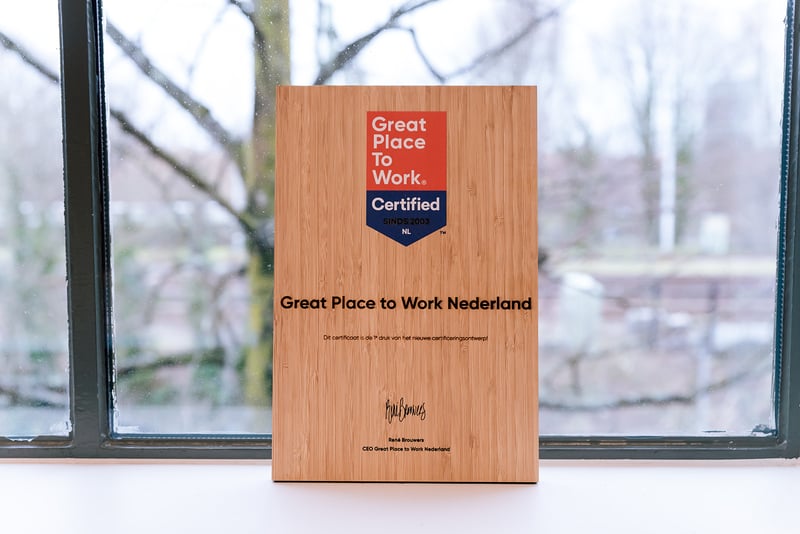Frequently Asked Questions
Below you will find answers to the most frequently asked questions about the Trust Index, Great Place To Work's employee survey.
The Trust Index is Great Place To Work's employee survey that measures trust, pride and camaraderie in organizations. The survey maps three interrelationships:
-
The relationship between employees and management (trust)
-
The relationship between employees and their work (pride)
-
The relationship among employees (camaraderie)
The Trust Index is based on universal values, making it applicable in any organization, regardless of size or industry. We conduct this survey annually in 10,000 organizations worldwide.
Great Place To Work helps organizations towards a culture of trust. We do this using the Trust Index, our employee survey which measures trust, pride and camaraderie.
We believe that trust is the basis for better individual performance, better team performance and better business results. Growth and innovation then follow naturally. Our philosophy is based on more than 30 years of experience in 60 different countries.
Read more about us.
A great place to work is an organization where employees trust their leaders, take pride in their jobs and have fun with their colleagues. This must apply to everyone, regardless of who you are or what you do.
We believe that organizations improve through honest feedback from their employees. Therefore, we do everything possible to handle your responses as confidentially as possible. In principle, we ensure that your answers cannot be linked to you by your manager. Once the survey closes, the link between you and your answers is broken. Your organization can only view aggregated data from groups larger than 5 respondents. Do you want to know exactly how confidentiality is ensured for this survey in your organization? Then contact support@gptw.nl.
After the survey, your organization can view the results in Emprising. This online platform has rules for displaying and filtering the outcomes to protect confidentiality. For example, it is not possible to view results from groups smaller than five respondents.
Please note: your responses to open-ended questions will be included exact in the report seen by your organization. Therefore, do not provide your name or other identifiable information in these answers.
Great Place To Work generally does not share directly traceable data with participating organizations. We also do not disclose who did or did not participate in the survey. Great Place To Work Netherlands has agreements with Great Place To Work Inc., the organization that developed and maintains Emprising, regarding data sharing with third parties. Researchers are the only third party that may access aggregated data for scientific purposes, and this is done under very strict conditions.
Great Place To Work is ISO 27001 certified. This means that we comply with strict information security requirements. In our privacy statement you can read in detail how we handle your data.
The Trust Index is not a goal, but a means of gaining insight into what is going on in the workplace. Based on the results, your organization can focus on areas for improvement. You can also play a role in this.
By participating in the Trust Index, you help your organization to become a better workplace. The research provides insight, exposes blind spots and offers concrete tools to work together on the culture in your organization. Sometimes an organization does not know what is going on or how to approach things.
The Trust Index consists of 60 statements that you can answer on a scale from "almost always not true" to "almost always true". We use this answer scale because it is about your perception. There are no wrong answers possible.
No, you are not obligated to participate. Your organization may also not force you to complete the survey. If it does, please let us know using this form.
A great place to work is a great workplace for everyone, no matter who you are or what you do. Therefore, while you are not obligated to participate, there is a minimum response rate based on the number of employees invited. That way, we ensure that the survey results are representative of all employees.
Filling it out takes about 10 to 15 minutes. You can save your answers in between and continue at a later time. You have two weeks to complete the survey.
The purpose of the Trust Index is not to judge managers, but to measure the trust relationship between employees with and without a managerial role. In the survey, you frequently encounter the term "management". This is a collective term by which we mean everyone with a managerial role in an organization.
You can compare it to a restaurant: your table is served by a regular waiter, but you also have contact with the person who receives you and the cook who appears at your table. All these experiences determine your experience, not just the experience you have with the regular waiter.
Also watch this video where we explain the term "management".
If you have a question, please contact our helpdesk. Our helpdesk can be reached every working day between 09:00 and 17:00 via:
-
Email: support@gptw.nl
-
Telephone: 020 236 12 40
After the survey, one of our Customer Success Managers will take your organization through the results. Then your organization will share the results with you and your colleagues and you will discuss them with each other: what is going well? And what can be improved?
The exact follow-up differs per organization. In any case, in this phase you will work together, because change cannot be achieved from the top down alone. So you can also contribute yourself, to be sure that something is really being done with your feedback.



/GPTWNL-NinaVanVliet-85.jpg?width=800&name=GPTWNL-NinaVanVliet-85.jpg)

